Wasps Visit the Goldenrod Community
Here is another creature that does not "live" on goldenrod, but whose adults love goldenrod nectar. Here is a female paper wasp earlier in summer 2015, gathering pulp to make her paper nest, which they furnish with insects to be mashed up for their babies. She is called the northern paper wasp, Polistes fuscatus. But in the late summer, males and females come to the goldenrod for its nectar. How do we know a female from a male? The female has 6 segments in her abdomen, while the male has 7. Also, the male has a shield-shaped face. Just for fun, here are two males leaping into the air upon spotting each other!
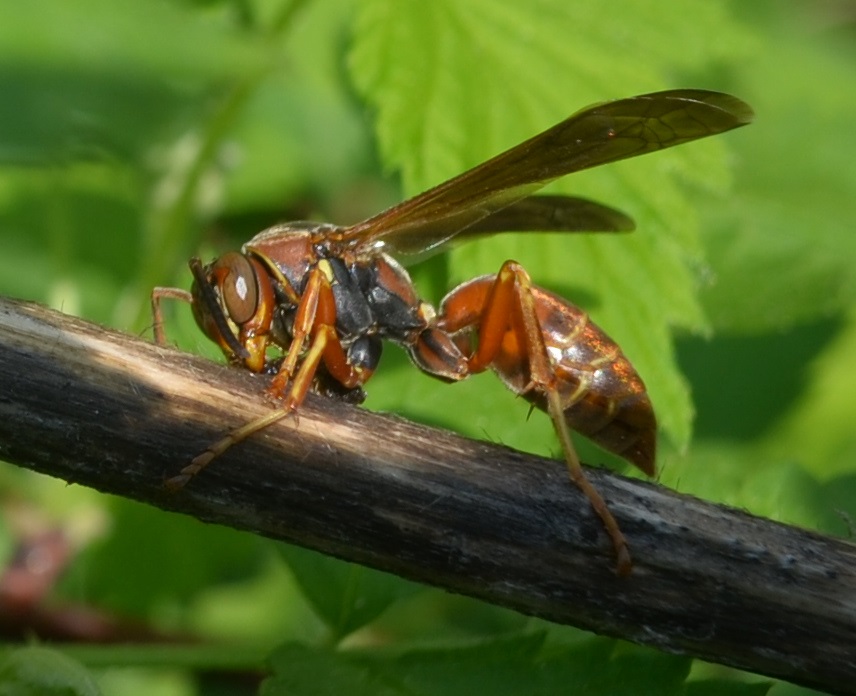
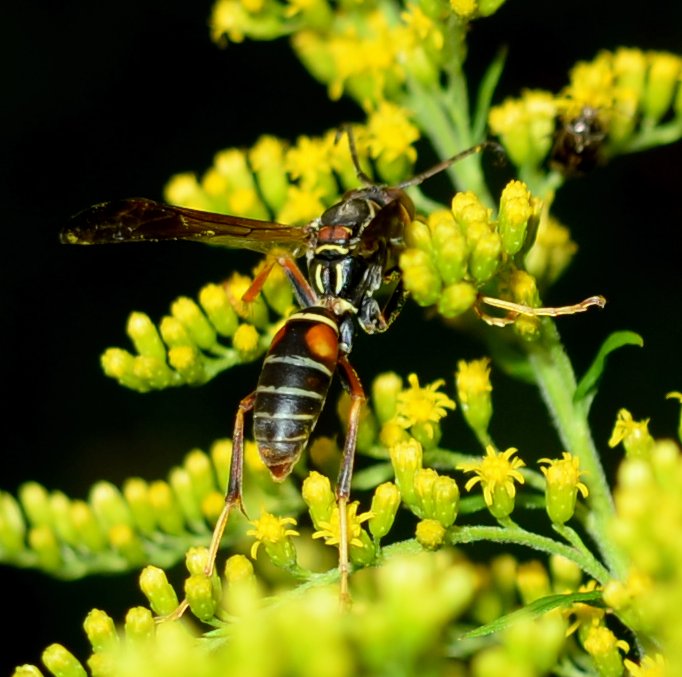

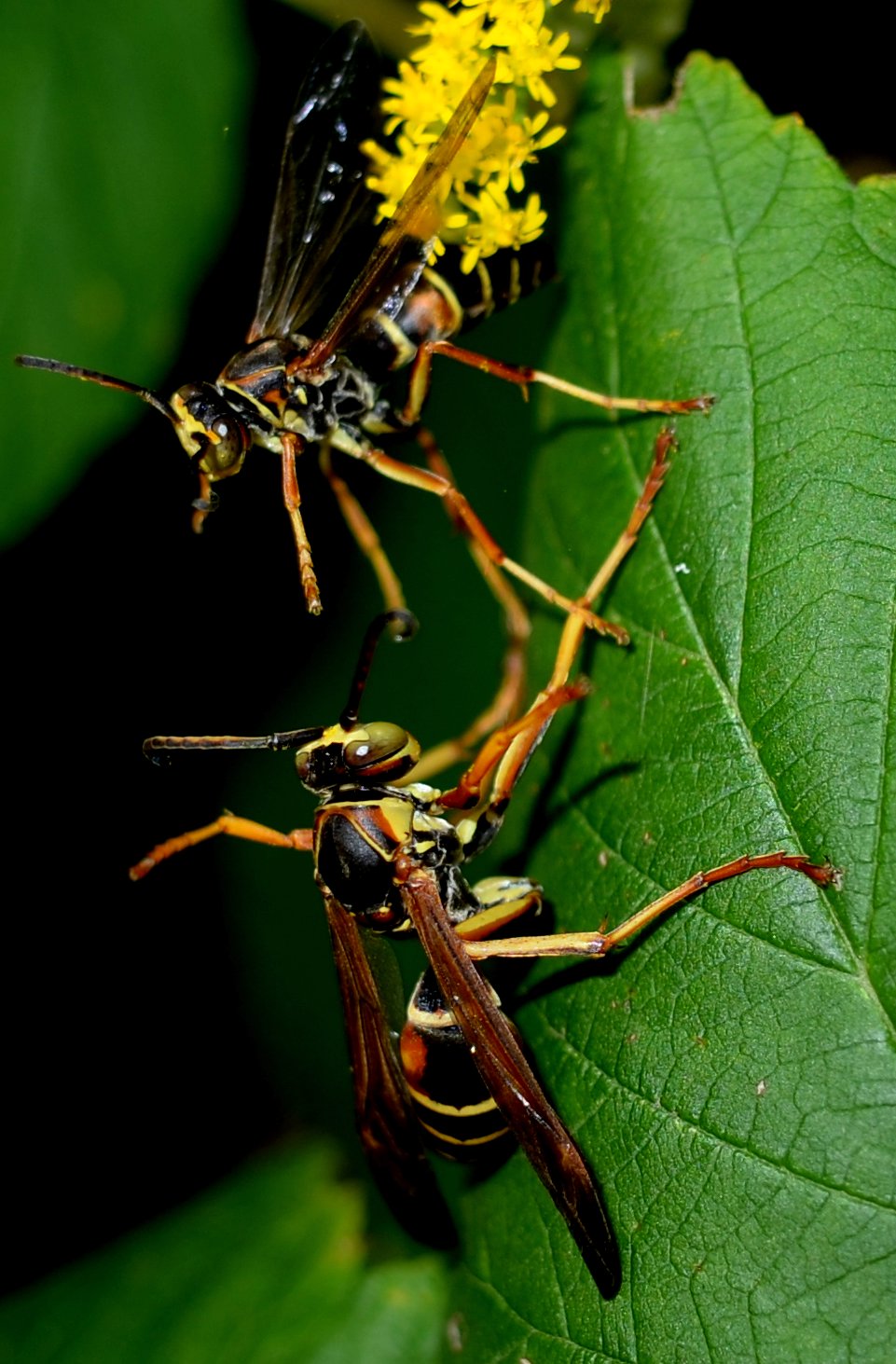
This wasp with the bold black and white pattern is a Bald-faced hornet queen. They love the trumpetvine flowers for their heady nectar. Next is a Common Aerial Yellowjacket. I hear they sometimes build their nests in the air, but not always. Last are two European paper wasps, in the process of building a fresh little nest. The bothersome part is that this nest (and a couple of old ones) is located just outside the south facing attic window, but inside a protective overhang made by an air conditioner. I'm making a cardboard and packing tape barrier so that a wasp or wasplet doesn't make its way into the attic. Although this is somewhat annoying to have to do, it means I have photographic access to the nest, something everyone needs in his or her life! Oh, and don't miss the egg in the very top cell!
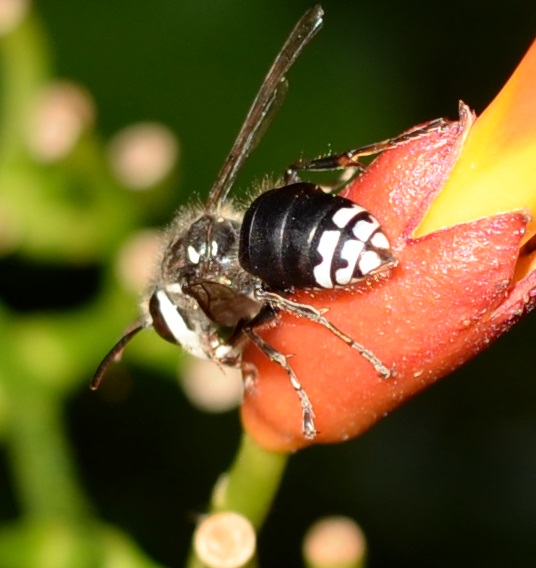
 male- 8 22 15 7a.jpg)
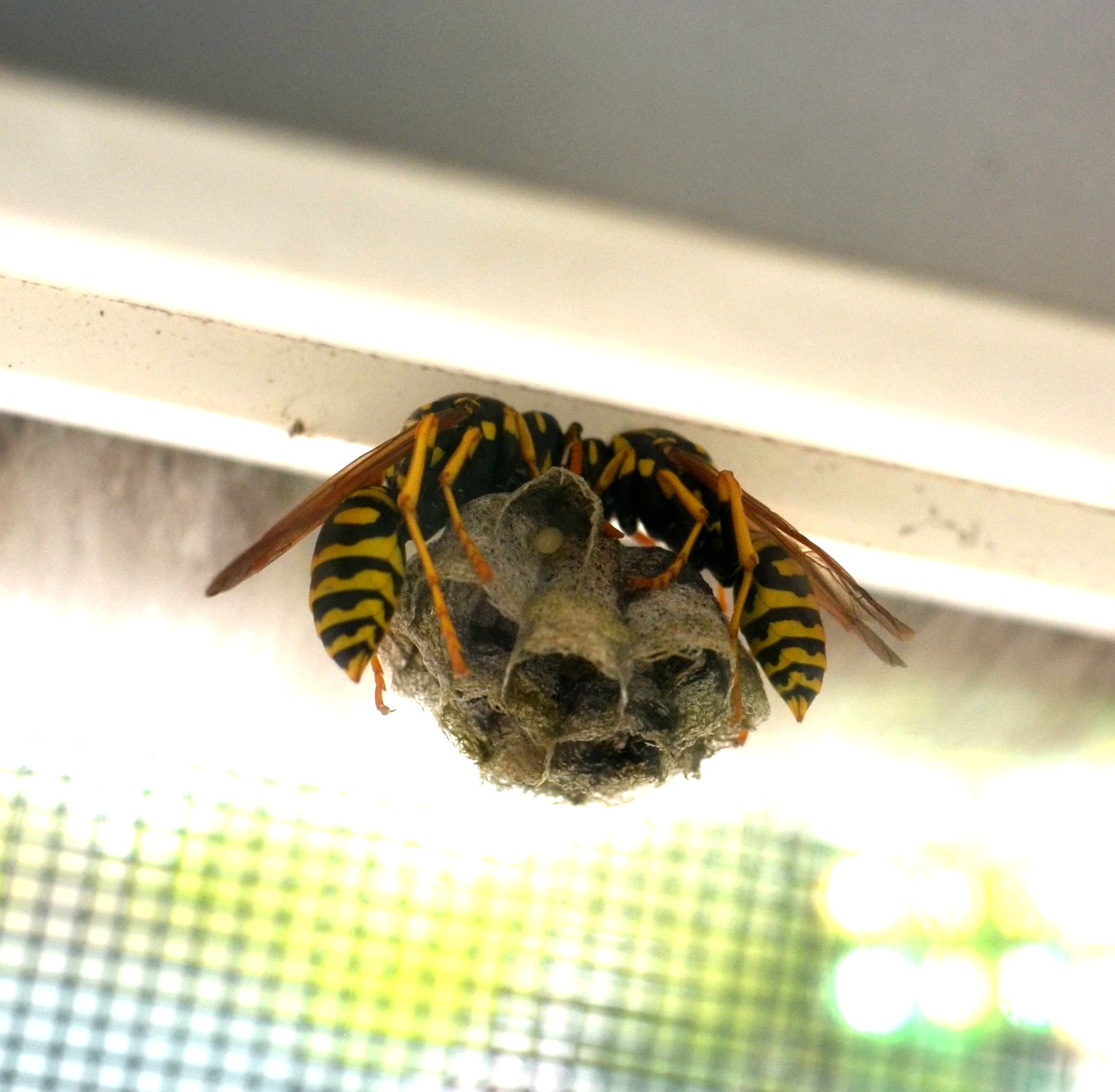
Of these yellowjackets and hornets, the ones you really need to be careful around are the ground-nesting yellowjackets. This year I got a scrip for two Epi-pens in case I step on a hidden nest and get stung. If I have to use one once, I will be staying mostly away from yellowjackets for the rest of the summer. Still this summer they appeared very placid. I was only buzzed by a wasp twice. One time it was by a Downy Yellowjacket. I had been sitting out by the pond with my supper, which included an ear of buttered corn. This wasp seemed to be quite aggressive so I got up and left the food. For the next half-hour, this yellowjacket fattened up on corn. The time before that, it had been this lovely wasp. It had flown around my shoulders buzzing loudly. I stepped back and it kept buzzing. I had already got its picture, so I let it go for the nonce. That evening when I was cropping the day's pictures I saw that it was no wasp, but a fly! Sure enough, there is a fly that mimics the black and yellow wasps down to the buzz! But no sting!
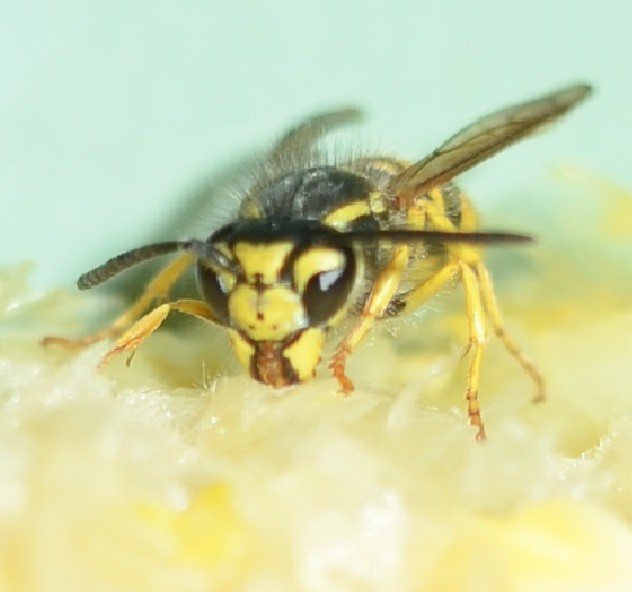
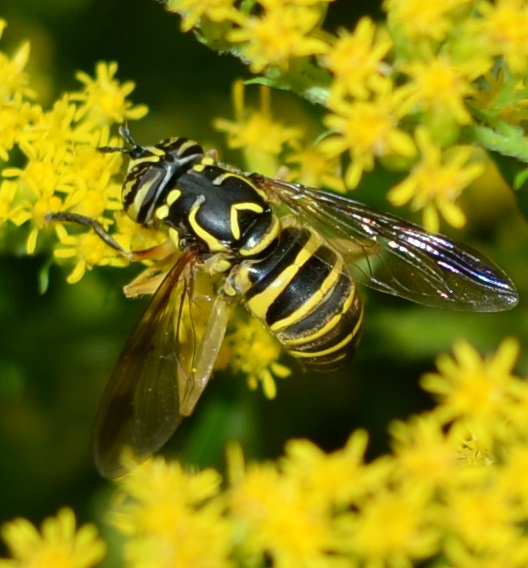
Now that I think I've convinced you that there are micro-environments right in my tiny yard, I'd like to move on to some more things that may surprise you with either their drop-dead gorgeosity or their habit of keeping other creatures to a decent population size or keeping some plant at bay.
Next









 male- 8 22 15 7a.jpg)


